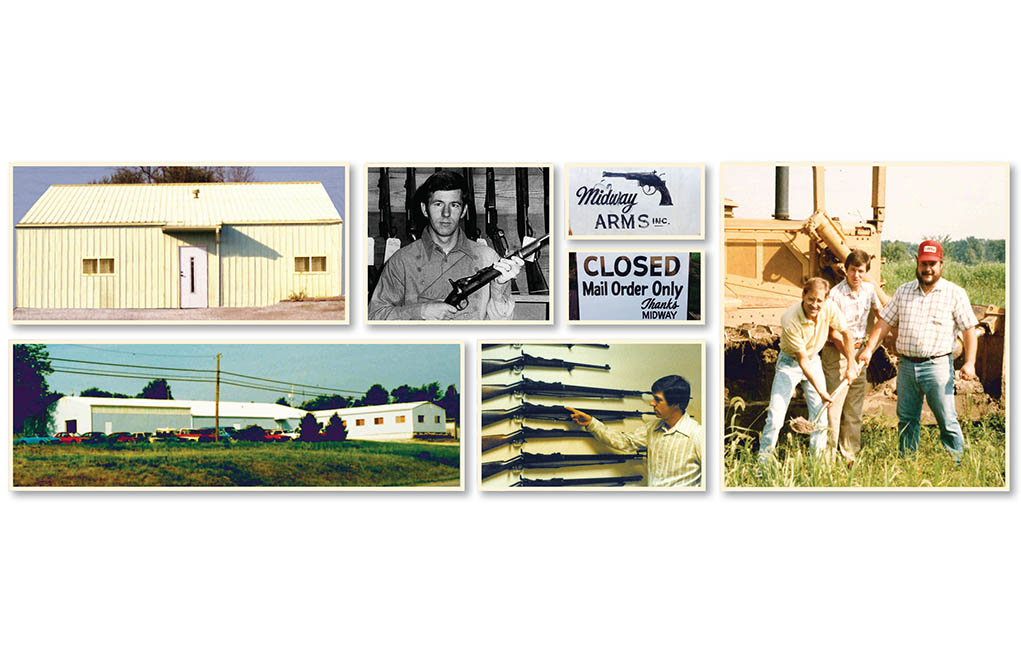Paleoartistic reconstruction of the newly-named leptomerycid genus, Santuccimeryx elissae, standing in front of hackberry bushes (Celtis hatcheri). Its small size (3-5 lbs/1-2 kgs), relatively large orbits, and shortened skull differentiate Santuccimeryx from the more common tiny, Oligocene deer Leptomeryx/Illustration by Benji Paysnoe
In what is now a stark and demanding landscape of siltstones, channel sandstones, and gravel deposits at Badlands National Park, the fossilized skull of a new genus of hornless deer has been discovered. About the size of a house cat, this small deer roamed a semi-tropical environment of open woodlands some 32 million years ago.
Discovered in 2016 by a citizen scientist but just publicly announced, the fossil was spotted by Tiffany Leone, a Geosientists-In-Parks intern, in an area of Badlands known for its rich fossil beds.
“The area where this animal is found has produced one of the most diverse fossil assemblages known from these sediments,” said Edward Welsh, the park’s education specialist. “The largest and smallest carnivores we have ever found shared the same environment. False saber-toothed cats, tiny dogs, tiny bears, and entelodonts (extinct relatives of pigs and hippos) about as large as a modern bison. The plant eaters in the area included other small deer that are well known from the area, abundant oreodonts (sheep-like herbivores), 3-toed horses, rhinos, rabbits, rodents, insectivores, and more.”

A stark landscape of crumbly rock where once a housecat-sized deer roamed within a semi-tropical environment of open woodlands, Badlands National Park / Rebecca Latson file
When the hornless deer, a creature perhaps weighing five pounds at most, made its home there, it likely was constantly on the lookout for predators ranging from carnivorous cats known as false sabertoothed cats to fox-sized dogs and possibly even a bird “about 7-8 feet tall, or big enough for small mammals to worry about,” said Welsh.
The deer eluded identification until last year, when Welsh and geoscientist and park ranger Mattison Shreero searched records of Leptomerycidae, an extinct species of deer-like animals that wandered across North America.
They looked at “other leptomerycids in museum collections for comparison, searching for other referrable specimens,” explained Welsh. “I focused mainly on dental features, since most of what we usually find are the teeth. I have a data set of nearly 1,000 specimens beween museum collections that had material from South Dakota, Colorado, Wyoming, and Nebraska.”
That research failed to point to a well defined match, which convinced the scientists that “it was appropriate to reposition this species into a new genus,” said Welsh.
The resulting name attached to the find, Santuccimeryx elissae, honors Vince Santucci, the National Park Service’s senior paleontologist.
“We brainstormed names for a while, and I realized that our friend and colleague Vince Santucci has a deep history and strong connection with the park, especially within the research area where this deer came from. Vince has also been a good friend for many years. I suggested we name the deer Santuccimeryx, and my partners/coauthors agreed with some degrees of enthusiasm,” Welsh said.
“I am both personally and professionally grateful to be associated with this important new fossil discovery from Badlands National Park, where I began my career as a paleontologist with the National Park Service in 1985,” Santucci said.
Welsh said it was difficult to predict the deer’s behavior, such as whether it traveled in herds. “We can only speculate while considering their closest living relatives,” he said. “I would imagine they might share similar behaviors to the living chevrotains (a.k.a. Mouse deer) of tropical southeast Asia and central to western Africa, which are typically solitary or live in pairs.”
Shreero said she enjoys interacting with young girls who visit the park, because she has the opportunity to model a career she once dreamed of.
“I was that little girl at the age of four, walking around telling people that I wanted to be a geologist and paleontologist, and that’s what I did,” she said. “I just try to encourage them and say it’s something you love, keep up with it, get into it, keep exploring, and keep learning.”
Visitors at Badlands who spot what they think might be a fossil or artifact are asked to leave it in place and submit a Visitor Site Report at the Visitor Center, with a park ranger, or by emailing information about their find to [email protected]. They should take a photo of the undisturbed find, preferably with another object or feature in sight to show scale, and document the coordinates or location of the find.

A comparison between Santuccimeryx elissae (foreground skull) and leptomerycidae (background), Badlands National Park / Rebecca Latson file





